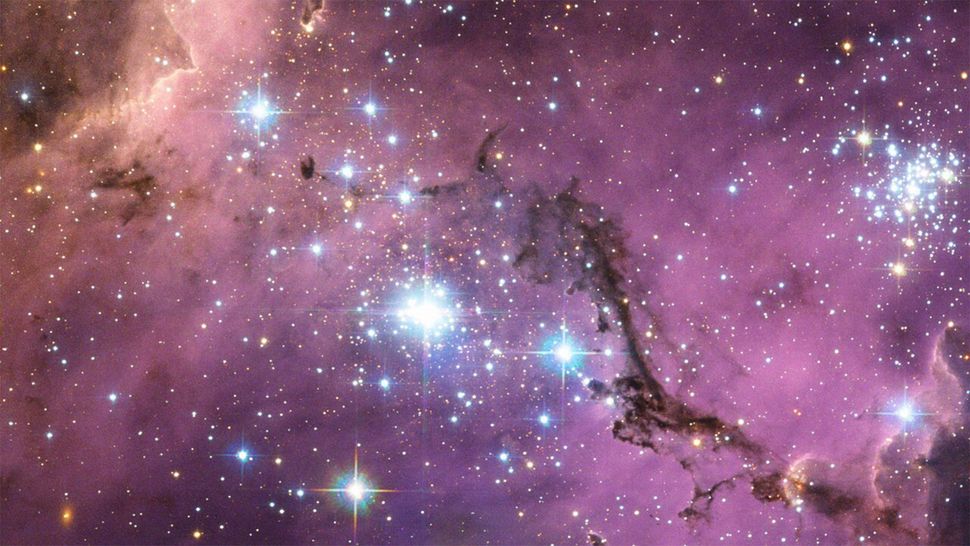Group of 60 ultra-faint stars orbiting the Milky Way could be new type of galaxy never seen before
By Sharmila Kuthunur
published 2 days ago
A new satellite galaxy discovered orbiting the Milky Way is either an incredibly ancient, soon-to-fragment clump of stars or the most dark-matter-dominated dwarf galaxy ever found.

A group of bright stars in the Large Magellanic Cloud, a satellite galaxy of the Milky Way. A newly discovered satellite galaxy named Ursa Major III/Unions 1 may be the smallest ever, with just 60 stars. (Image credit: Hubble/ NASA Goddard)
Astronomers have spotted the faintest and lightest satellite galaxy ever found: a minuscule, tight-knit group of stars trailing the Milky Way. The peculiar discovery could represent a new class of impossibly faint, dark-matter-dominated star systems that had eluded detection until now.
Tentatively named Ursa Major III/Unions 1 (UMa3/U1), the newfound star system resides in the constellation Ursa Major, about 30,000 light-years from the sun. It is the newest addition to our galaxy's assortment of at least 50 satellite galaxies. Even the smallest of these galaxies host thousands to billions of stars.
The newfound system, by contrast, has just a sprinkling of 60 stars. As such, its mass is just 16 times the mass of the sun, scientists reported in a new study. For comparison, the Milky Way's mass is about 1.5 trillion times that of our star, according to NASA.
UMa3/U1 also defies the conventional image of a distinctively shaped galaxy.
"This discovery may challenge our understanding of galaxy formation and perhaps even the definition of a 'galaxy,'" Simon Smith, a graduate student at the University of Victoria in Canada and the lead author of the study, said in a statement. "UMa3/U1 had escaped detection until now due to its extremely low luminosity."
More:
https://www.livescience.com/space/cosmology/group-of-60-ultra-faint-stars-orbiting-the-milky-way-could-be-new-type-of-galaxy-never-seen-before
